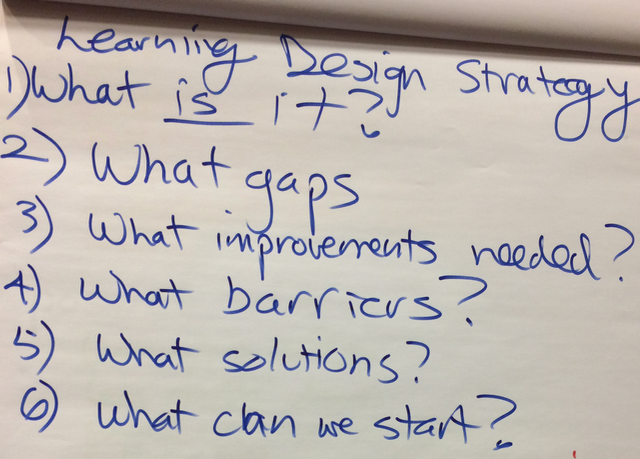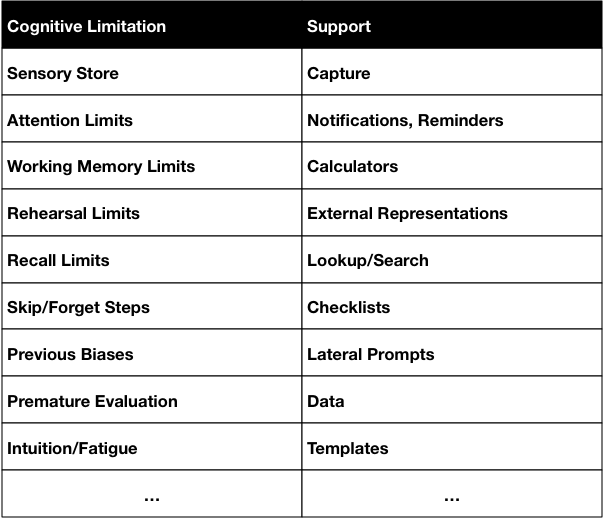 At the DevLearn conference, I ran a Morning Buzz on Learning Design Strategy. I’m happy to say that the participants threw in lots of ideas, and I thought they were worth capturing. I started with a set of questions to address, so I’ll go through their comments in roughly that order (though we didn’t exactly follow this structure):
At the DevLearn conference, I ran a Morning Buzz on Learning Design Strategy. I’m happy to say that the participants threw in lots of ideas, and I thought they were worth capturing. I started with a set of questions to address, so I’ll go through their comments in roughly that order (though we didn’t exactly follow this structure):
What is learning design strategy?
I had in mind the approach taken by an organization to their learning design. Attendees suggested it’s your goals and approach, ensuring you are delivering effectively. It’s also your review approach, and metrics. These are all elements that indeed contribute to strategy.
What gaps are we seeing in learning design strategy?
The participants offered up a suite of places that were problems, including aligning with organizational goals and access to support measuring impact, both of which are indeed strategic issues. They also raised problems with prioritization of the demands, the need to move beyond just courses, and the lack of learning design knowledge. All are real problems.
What do we need to be able to improve?
The audience offered up a number of suggestions. For one, there was a desire for strategies (probably more tactics) for doing beyond ‘the event’. Support for selling changes in the way of doing things was mentioned as well. The shift to self-learning was mentioned, leading to concern over how to support this. Attendees also mentioned a need of awareness in designing ‘backwards‘. Finally, a culture of learning was expressly discussed.
What are possible solutions?
The participants offered a suite of suggestions. One was adopting a learn-apply-perform model, which another termed a learn-practice-demo. Both were getting at the need for active practice and an ability to actually demonstrate performance. There was also a mention of looking to social networks and peer recommendations to lower the demand and facilitate self-learning. A culture shift was suggested, supported by the methods used to teach! A final solution was to move quickly to mentoring, which implicitly suggests including mentoring in the design.
Steps to take to move forward?
I also wanted to know what how they might move forward, and what they needed. Two clear suggestions emerged. One was for examples, and I reckon both of better learning designs, and approaches to implement those learning designs in organizations. The other was for tools. Here it was clear that they weren’t talking about tools to develop learning, but tools to support them doing good design, and following processes.
At the end I left with mixed feelings. It’s good to know that the problems I see are reflected in what the practitioners reports; we see the same problems It’s also sad that these problems exist. I do believe that the Serious eLearning Manifesto is one piece of support. And I’ve written on practices (e.g. with SMEs), but it’s clear that some practical scaffolding would help. I’ve worked with a few organizations, but I’m struggling to find ways to help more. (Maybe this is the topic of my next book?) So, what ideas do you have?
(I’m offering a webinar next week that will address these issues, if you’re serious about making changes.)

 So, for instance, our senses capture incoming signals in a sensory store. Which has interesting properties that it has almost an unlimited capacity, but for only a very short time. And there is no way all of it can get into our working memory, so what happens is that what we attend to is what we have access to. So we can’t recall what we perceive accurately. However, technology (camera, microphone, sensors) can recall it all perfectly. So making capture capabilities available is a powerful support.
So, for instance, our senses capture incoming signals in a sensory store. Which has interesting properties that it has almost an unlimited capacity, but for only a very short time. And there is no way all of it can get into our working memory, so what happens is that what we attend to is what we have access to. So we can’t recall what we perceive accurately. However, technology (camera, microphone, sensors) can recall it all perfectly. So making capture capabilities available is a powerful support.